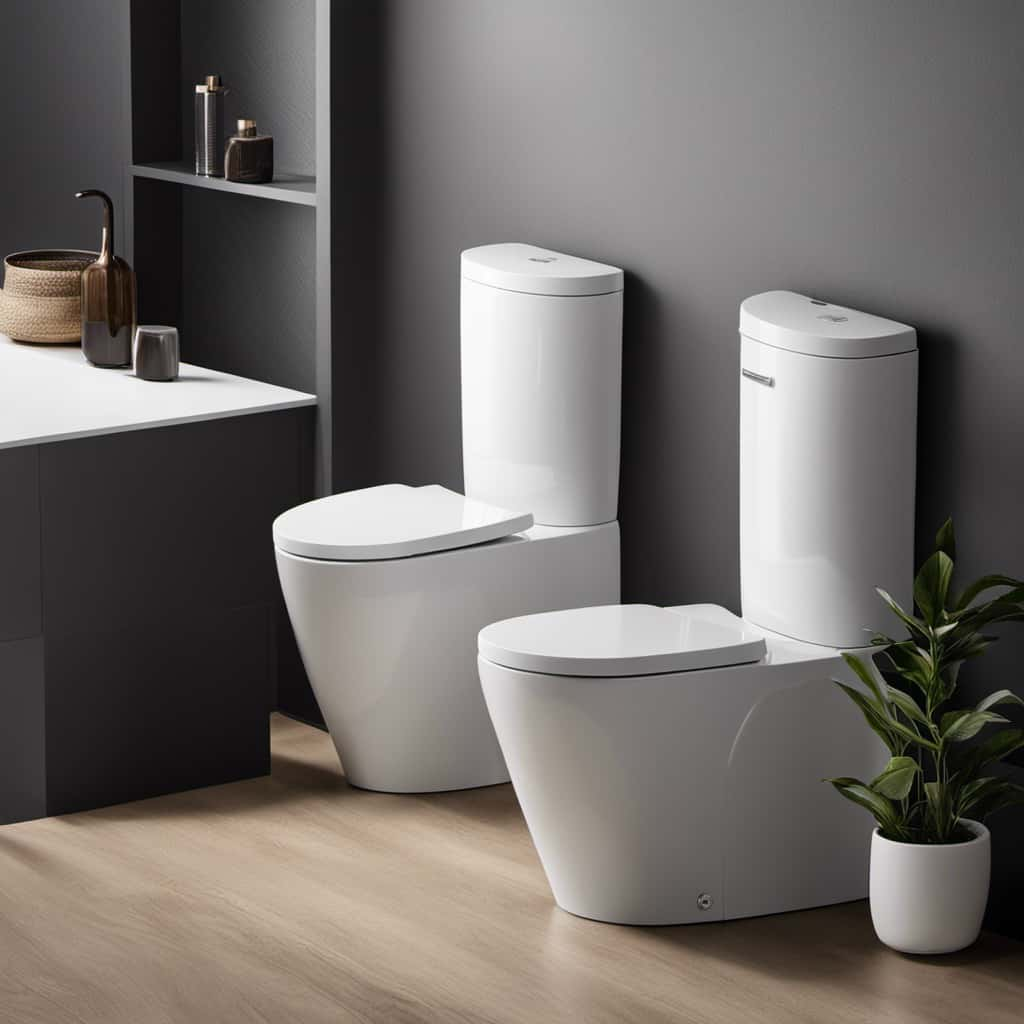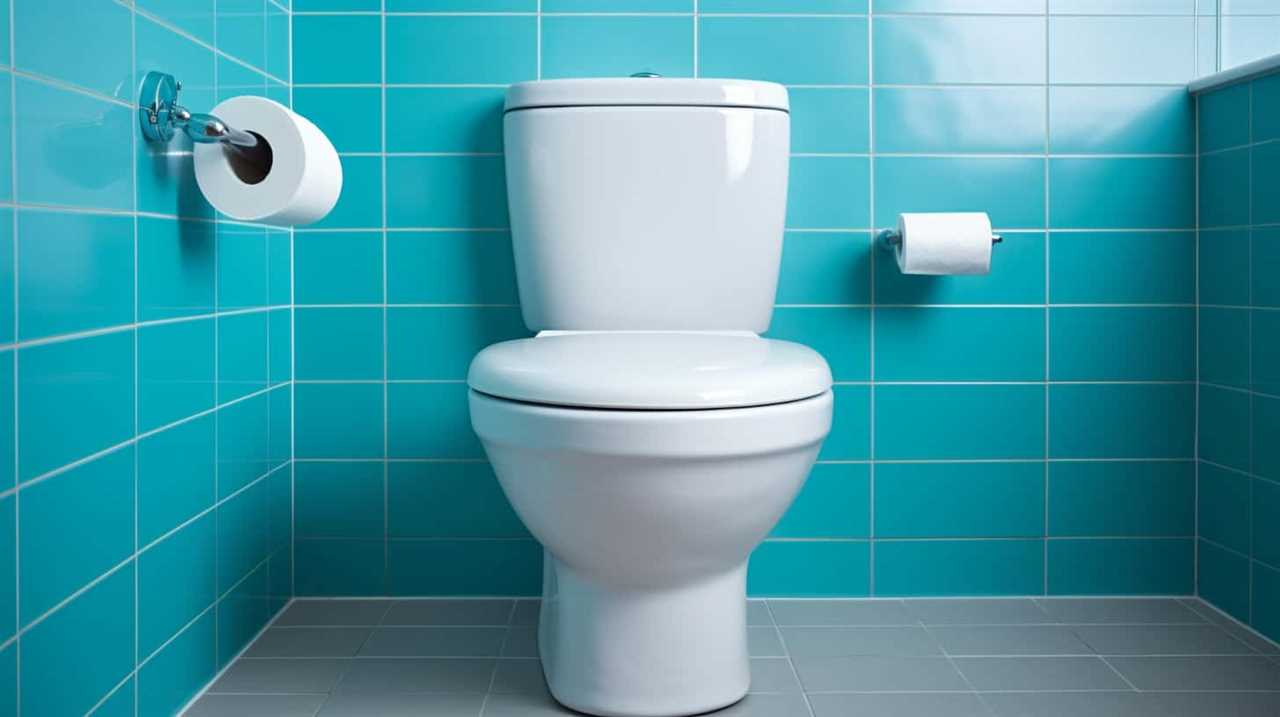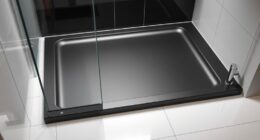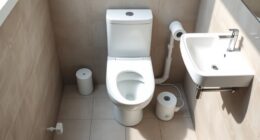Are you prepared to begin exploring the secrets of bathroom sinks? Get ready, because we, your reliable guides, are here to lead you on a one-of-a-kind adventure!
In this article, we will explore the different types of bathroom sinks, discuss factors to consider when choosing one, and weigh the pros and cons of undermount sinks.
We will also marvel at the versatility of vessel sinks and show you how to properly clean and maintain your sink.
Get ready to become a master of all things bathroom sink-related!

Key Takeaways
- There are different types of bathroom sinks, including pedestal sinks and wall-mounted sinks.
- Factors to consider when choosing a bathroom sink include the material options, durability and ease of cleaning, elegance, resistance to stains and scratches, and unique and natural look.
- Undermount sinks offer a seamless appearance, easy cleaning, increased counter space, and an elegant and modern look, but they can be more expensive to install and have limited options for sink selection.
- Vessel sinks are versatile and offer various installation options, shapes, sizes, and materials. They create a striking visual impact and can be a popular choice for creating a statement in the bathroom.
Different Types of Bathroom Sinks
In our daily lives, we frequently encounter different types of bathroom sinks. Two popular options are pedestal sinks and wall-mounted sinks.
Pedestal sinks are freestanding and have a base that supports the sink and hides the plumbing. They’re often chosen for their classic and elegant design, which adds a touch of sophistication to any bathroom.
On the other hand, wall-mounted sinks are directly attached to the wall, with their plumbing concealed behind it. These sinks are ideal for small bathrooms or spaces where maximizing floor space is essential. They provide a sleek and minimalist look, making them a popular choice for modern and contemporary designs.
Both pedestal sinks and wall-mounted sinks offer functionality and style, with each option catering to different preferences and needs.

Factors to Consider When Choosing a Bathroom Sink
When choosing a bathroom sink, there are several factors to consider.
One important factor is the material options for bathroom sinks. The most common materials include porcelain, ceramic, glass, stainless steel, and stone.
Porcelain and ceramic sinks are durable and easy to clean, while glass sinks add a touch of elegance to any bathroom. Stainless steel sinks are resistant to stains and scratches, making them a popular choice for high-traffic bathrooms. Stone sinks, such as granite or marble, offer a unique and natural look, but require more maintenance.
Another factor to consider is the type of sink faucet. The faucet should complement the style of the sink and the overall bathroom decor. Some popular faucet options include single-handle, double-handle, wall-mounted, and vessel sink faucets.

It’s important to choose a faucet that’s both functional and visually appealing.
Pros and Cons of Undermount Sinks
Now let’s delve into the pros and cons of undermount sinks, considering the factors we discussed earlier.
Undermount sinks offer several advantages over other types of sinks:
- Seamlessness: Undermount sinks are installed beneath the countertop, creating a sleek and seamless appearance. This design eliminates the rim or lip found in other sink types, making it easier to clean and maintain.
- Increased counter space: With an undermount sink, you have more usable counter space. The absence of a rim allows you to utilize the entire surface of the countertop, providing you with extra room for meal prep or other activities.
- Enhanced aesthetics: Undermount sinks are highly popular for their elegant and modern look. They seamlessly blend with the countertop, giving your bathroom a clean and sophisticated appearance.
However, it’s important to consider the disadvantages of undermount sinks as well:

- Higher installation cost: Installing an undermount sink can be more expensive compared to other sink types due to the additional labor and materials required.
- Limited sink options: Undermount sinks are typically designed for specific countertop materials, which may limit your options when it comes to sink selection.
- Potential for water damage: If the sink isn’t properly sealed during installation, there’s a risk of water seeping into the countertop and causing damage over time.
Considering these factors, it’s important to weigh the advantages and disadvantages of undermount sinks before making a decision.
Now, let’s move on to explore the versatility of vessel sinks.
The Versatility of Vessel Sinks
Moving on to the versatility of vessel sinks, we can explore their wide range of uses and design possibilities.
Vessel sinks aren’t limited to being installed on countertops; they can also be used as freestanding sinks. This allows for greater flexibility in bathroom design, as they can be placed on vanities, consoles, or even mounted on walls.

Vessel sinks come in various shapes, sizes, and materials, allowing for unique sink designs that can complement any bathroom style. From sleek and modern to rustic and traditional, vessel sinks offer endless design options.
Their raised installation also provides a striking visual impact, making them a focal point in the bathroom.
With their versatility and unique design possibilities, vessel sinks are a popular choice for those seeking to create a statement in their bathroom.
How to Properly Clean and Maintain Your Bathroom Sink
To properly clean and maintain our bathroom sink, we need to establish a regular cleaning routine. Here are some tips to help you keep your bathroom sink in top shape:

- Use a mild cleaner: Regularly clean your sink with a mild cleaner to remove any dirt or grime. Avoid using abrasive cleaners that can damage the sink surface.
- Check for leaks: Inspect your sink regularly for any leaks or drips. If you notice any, fix them promptly to prevent water damage and wastage.
- Prevent clogs: Avoid pouring grease, oil, or food particles down the drain to prevent clogs. Use a sink strainer to catch hair and other debris, and periodically clean it out.
By following these simple steps, you can prevent common bathroom sink problems and keep your sink clean and functioning properly.
Regular maintenance will help extend the lifespan of your sink and ensure it continues to look great for years to come.
Frequently Asked Questions
How Much Does a Bathroom Sink Typically Cost?
Bathroom sink installation costs can vary depending on the type of sink chosen. There are various options available such as pedestal, wall-mounted, and undermount sinks. Prices typically range from $100 to $500.
Can I Install a Bathroom Sink on My Own, or Do I Need to Hire a Professional?
Installing a bathroom sink: DIY or hire a professional? It depends on your skill level and comfort with plumbing tasks. While hiring a pro ensures expertise, tackling it ourselves can save money and give a sense of accomplishment.

Are There Any Special Plumbing Requirements for Installing a Bathroom Sink?
When installing a bathroom sink, it’s important to consider any special plumbing requirements. These may include connecting the water supply lines, installing a drain pipe, and ensuring proper ventilation. The installation process should be done carefully to avoid any leaks or damage.
Can I Use Any Type of Faucet With Any Type of Bathroom Sink?
Yes, you can use any type of faucet with any type of bathroom sink. However, it is important to consider faucet compatibility with different sink types to ensure proper installation and functionality.
How Long Can I Expect a Bathroom Sink to Last Before Needing to Be Replaced?
On average, a bathroom sink lasts around 10-15 years before needing replacement. Signs of wear and tear include cracks, leaks, and discoloration. Regular maintenance and careful use can extend the lifespan of a sink.
Conclusion
In conclusion, choosing the right bathroom sink is crucial for both functionality and aesthetics. Consider factors such as size, style, and maintenance requirements when making your decision.

While undermount sinks offer a sleek and seamless look, vessel sinks add a touch of versatility to your bathroom design.
Remember to clean and maintain your sink regularly to ensure its longevity.
So, why settle for an ordinary sink when you can elevate your bathroom with the perfect choice?










